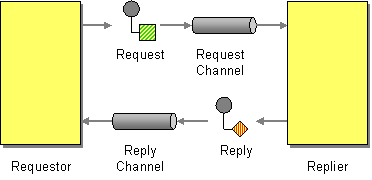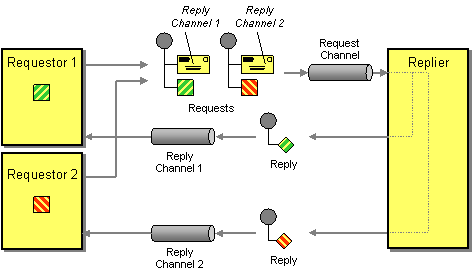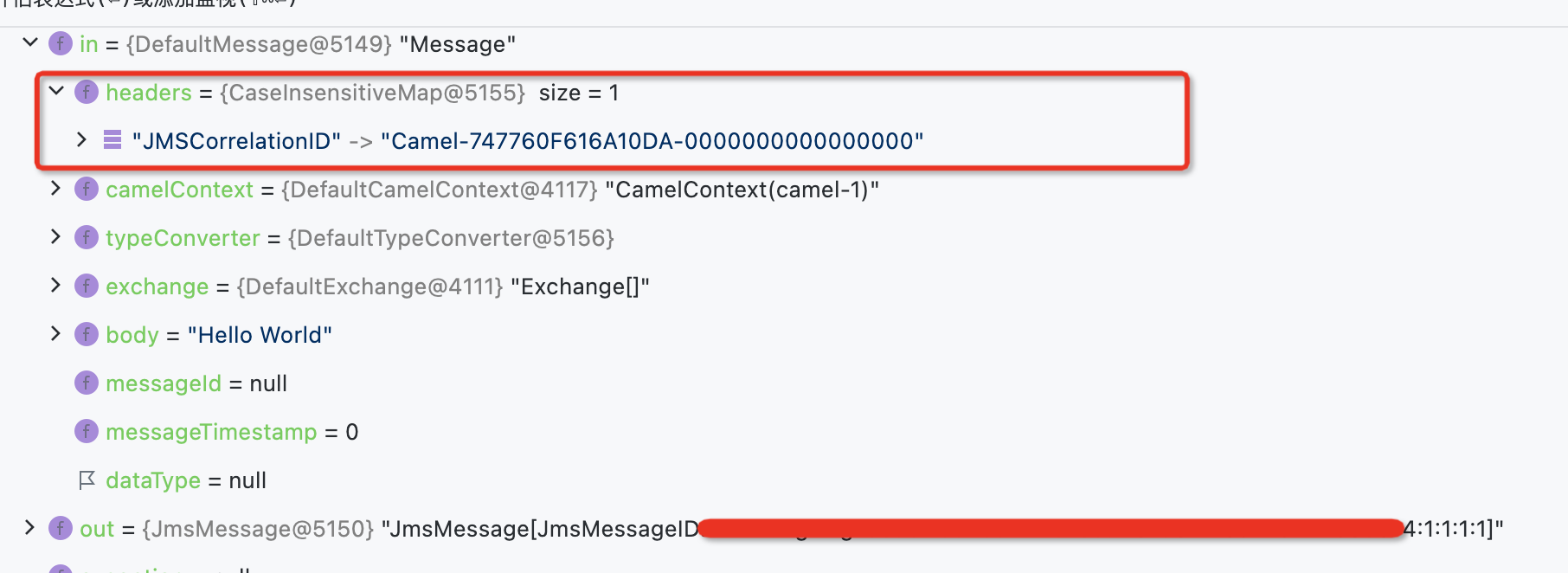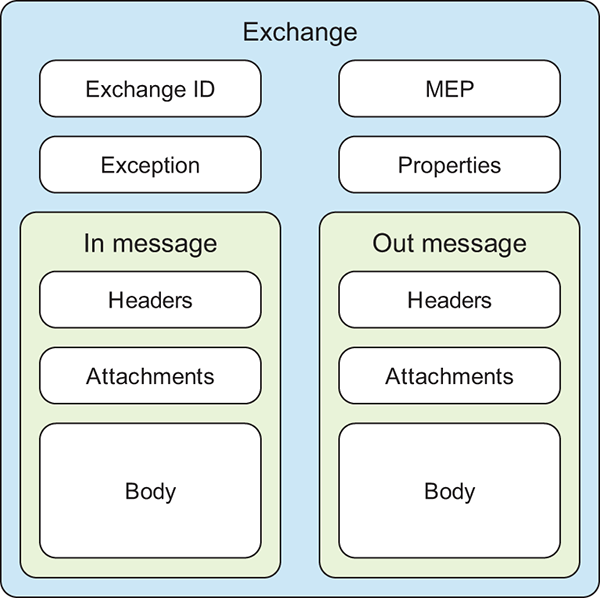1
2
3
4
5
6
7
8
9
10
11
12
13
14
15
16
17
18
19
20
21
22
23
24
25
26
27
28
29
30
31
32
33
34
35
36
37
38
39
40
41
42
43
44
45
46
47
48
49
50
51
52
53
54
55
56
57
58
59
60
61
62
63
64
65
66
67
68
69
70
71
72
73
74
75
76
77
78
79
80
81
82
83
84
85
86
87
88
89
90
91
92
93
94
95
96
97
98
99
100
101
102
103
104
105
106
107
108
109
110
111
112
113
114
115
116
117
118
119
120
121
122
123
124
125
126
127
128
129
130
131
132
133
| public class SetExchangePatternTest extends ContextTestSupport {
@Test
public void testInOut() throws Exception {
assertMessageReceivedWithPattern("direct:testInOut", ExchangePattern.InOut);
}
@Test
public void testInOnly() throws Exception {
assertMessageReceivedWithPattern("direct:testInOnly", ExchangePattern.InOnly);
}
@Test
public void testSetToInOnlyThenTo() throws Exception {
assertMessageReceivedWithPattern("direct:testSetToInOnlyThenTo", ExchangePattern.InOnly);
}
@Test
public void testSetToInOutThenTo() throws Exception {
assertMessageReceivedWithPattern("direct:testSetToInOutThenTo", ExchangePattern.InOut);
}
@Test
public void testToWithInOnlyParam() throws Exception {
assertMessageReceivedWithPattern("direct:testToWithInOnlyParam", ExchangePattern.InOnly);
}
@Test
public void testToWithInOutParam() throws Exception {
assertMessageReceivedWithPattern("direct:testToWithInOutParam", ExchangePattern.InOut);
}
@Test
public void testSetExchangePatternInOnly() throws Exception {
assertMessageReceivedWithPattern("direct:testSetExchangePatternInOnly", ExchangePattern.InOnly);
}
@Test
public void testPreserveOldMEPInOut() throws Exception {
getMockEndpoint("mock:result").expectedMessageCount(1);
getMockEndpoint("mock:result").message(0).exchangePattern().isEqualTo(ExchangePattern.InOut);
Exchange out = template.send("direct:testInOut", new Processor() {
@Override
public void process(Exchange exchange) throws Exception {
exchange.getIn().setBody("Hello World");
exchange.setPattern(ExchangePattern.InOnly);
}
});
assertNotNull(out);
assertEquals(ExchangePattern.InOnly, out.getPattern());
assertMockEndpointsSatisfied();
}
@Test
public void testPreserveOldMEPInOnly() throws Exception {
getMockEndpoint("mock:result").expectedMessageCount(1);
getMockEndpoint("mock:result").message(0).exchangePattern().isEqualTo(ExchangePattern.InOnly);
Exchange out = template.send("direct:testInOnly", new Processor() {
@Override
public void process(Exchange exchange) throws Exception {
exchange.getIn().setBody("Hello World");
exchange.setPattern(ExchangePattern.InOut);
}
});
assertNotNull(out);
assertEquals(ExchangePattern.InOut, out.getPattern());
assertMockEndpointsSatisfied();
}
protected void assertMessageReceivedWithPattern(String sendUri, ExchangePattern expectedPattern)
throws InterruptedException {
ExchangePattern sendPattern;
switch (expectedPattern) {
case InOut:
sendPattern = ExchangePattern.InOnly;
break;
case InOnly:
sendPattern = ExchangePattern.InOut;
break;
default:
sendPattern = ExchangePattern.InOnly;
}
MockEndpoint resultEndpoint = getMockEndpoint("mock:result");
String expectedBody = "InOnlyMessage";
resultEndpoint.expectedBodiesReceived(expectedBody);
resultEndpoint.expectedHeaderReceived("foo", "bar");
template.sendBodyAndHeader(sendUri, sendPattern, expectedBody, "foo", "bar");
resultEndpoint.assertIsSatisfied();
ExchangePattern actualPattern = resultEndpoint.getExchanges().get(0).getPattern();
assertEquals(actualPattern, expectedPattern, "received exchange pattern");
}
@Override
protected RouteBuilder createRouteBuilder() {
return new RouteBuilder() {
public void configure() {
from("direct:testInOut").to(ExchangePattern.InOut, "mock:result");
from("direct:testInOnly").to(ExchangePattern.InOnly, "mock:result");
from("direct:testSetToInOnlyThenTo").setExchangePattern(ExchangePattern.InOnly).to("mock:result");
from("direct:testSetToInOutThenTo").setExchangePattern(ExchangePattern.InOut).to("mock:result");
from("direct:testToWithInOnlyParam").to(ExchangePattern.InOnly, "mock:result");
from("direct:testToWithInOutParam").to(ExchangePattern.InOut, "mock:result");
from("direct:testSetExchangePatternInOnly").setExchangePattern(ExchangePattern.InOnly).to("mock:result");
}
};
}
}
|



